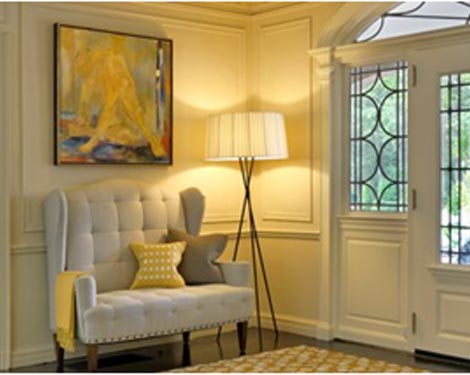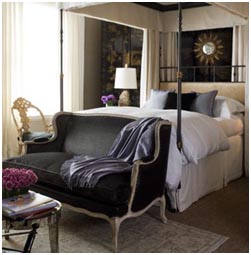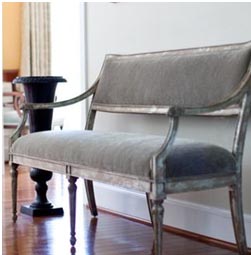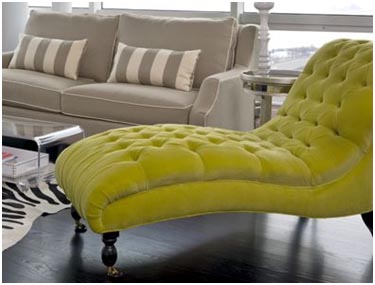Looking for an elegant, versatile piece of furniture to seat one or two for lounging, sitting or even snoozing? Below we’ll sort out the differences between these popular furniture pieces, plus discuss a few others you may encounter on your furniture hunt.
What is a Settee?

A Settee is a small sofa with two arms and a back. It usually seats two and is more upright and slender than a typical sofa. Unlike most sofas, a settee can easily be placed in an entryway, in a bedroom or even pulled up to the dining table, thanks to its elegant proportions and upright posture.
A settee can be fully upholstered, like the one shown in the last photo, or it may

have an upholstered seat and back, with exposed wood on the arms and frame, like the one shown here.
When is a Settee a bench?

A Settee with space between the back and the seat, like the one shown here, can also be called a bench. If it is upholstered (as this one is) it’s still safe to call it a settee; if there is no upholstery, definitely call it a bench.
What is a Chaise?

Coming from the French term “chaise longue,” meaning “long chair,” a chaise is an upholstered seat for one, and it is meant for reclining in – think of this as a chair and foot stool in one. Chaises always have a back and may have one, two or no arms. A chaise with a back and one arm, often sloping, is sometimes called a fainting couch. Some chaises, like the one you see here, are contoured, making it even more tempting to lie back and relax in. Others have a more contemporary upright shape and can be used to seat two side by side or one reclining.
What is a Recamier?

Slightly different from a settee or chaise, a Recamier typically has two scrolled ends – it can be used from either direction. Some have one arm on each end (on opposite sides) so two people can sit facing each other.
A contemporary spin on the Recamier, backless couches usually have straight, low sides (but some have high sides) and no back.
What Is a Daybed?
Daybeds usually have a regular twin-size mattress, a low back and two raised ends. You can use the piece as a couch during the day and, when it’s cleared of extra pillows, as a bed at night. Because daybeds (unlike divans) have backs, you can position them anywhere in the room – not just against the wall.
What is a Divan?
Think of the Divan as the daybed’s older, more lounge-worthy sibling. Originating in Persia, a divan has a tufted mattress-like seat, either directly on the ground or on a low wooden frame.
It is usually pushed against a wall, where pillows can be piled up to create a daytime seat – at night it can be cleared off and used as a bed.
The terms “divan” and “daybed” are often used interchangeably, but “daybed” is the more common term. And sometimes the way you use a piece determines what you call it – for instance.



















Your Message